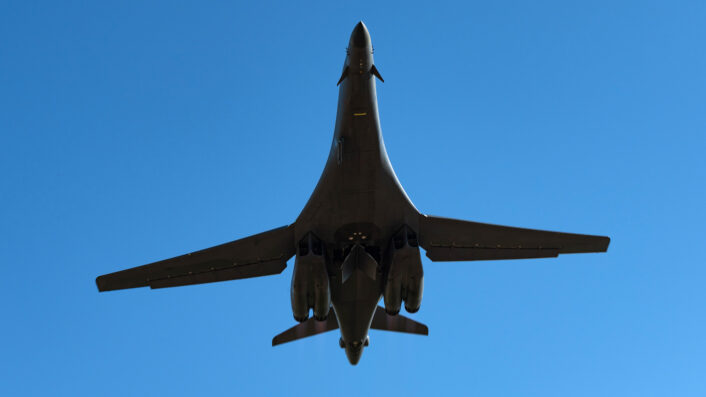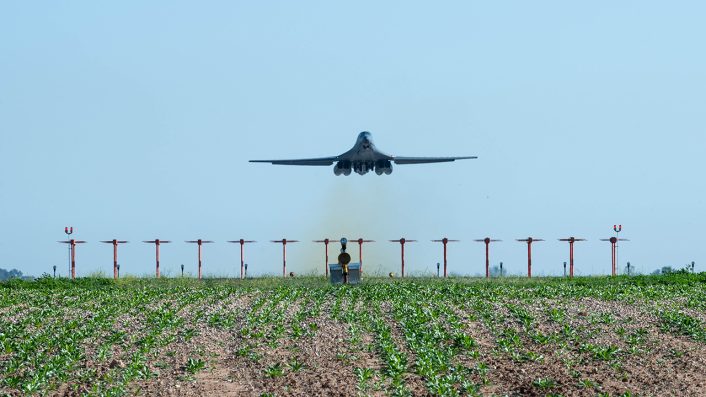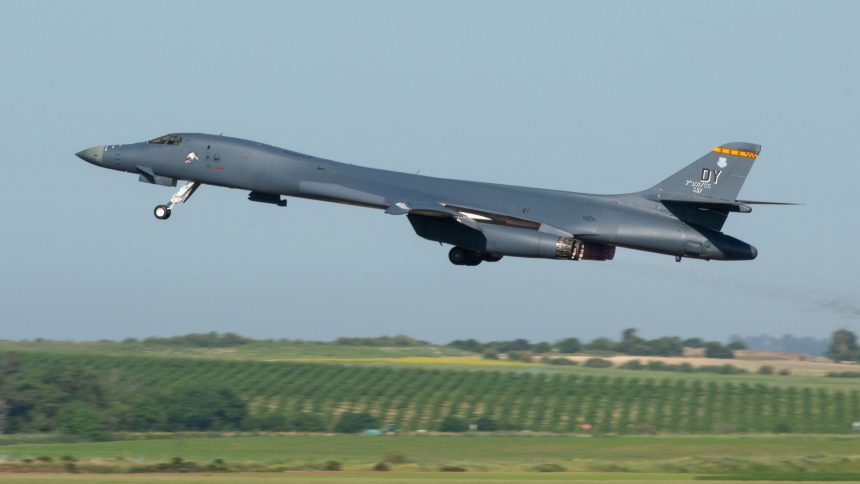The deployment is part of a long-planned, routine training mission conducted under Bomber Task Force 24-2 and is not related to the Iranian attack on Israel.
Flying as HOWLER 11-12, two U.S. Air Force B-1B Lancers assigned to the 7th Bomb Wing, Dyess Air Force Base, Texas, and deployed to Morón Air Base, Spain, since the end of last month for Bomber Task Force 24-2, forward deployed to Incirlik Air Base, Turkey, on Apr. 15, 2024.
Despite the tension in the Middle East, following the Iranian attack on Israel on Apr. 14 and the retaliation by Tel Aviv expected in the next days, the deployment of the U.S. bombers has, according to the U.S. Air Forces in Europe – Air Forces Africa Public Affairs, nothing to do with the tensions in the region, but part of a long-planned, routine training mission conducted under Bomber Task Force 24-2.
Two U.S. Air Force B-1B Lancers flew from their deployed location at Morón Air Base, Spain, to Incirlik Air Base, Türkiye, April 15, 2024 as part of a long-planned, routine training mission conducted under Bomber Task Force 24-2.https://t.co/bwRTj3H2A0 pic.twitter.com/1380Bc9nio
— 39_ABW (@39_ABW) April 15, 2024
“As part of the mission, the U.S. aircraft integrated with and trained alongside Turkish fighter aircraft before landing at Incirlik, where the U.S. aircraft are projected to conduct additional training events in coordination with Turkish forces.”
“We would like to thank our Turkish hosts for their role in this vital training opportunity and for their on-going support to our team living and working as part of the Incirlik community,” said Col. Kevin Lord, the 39th Air Base Wing Commander. “Bilateral operations and routine engagement between U.S. and Turkish forces, including these recent bomber task force missions, strengthen our shared commitment to regional security and stability.”
U.S. European Command, U.S. Air Forces in Europe, and the 39th Air Base Wing officials also emphasized the importance of the partnerships with the Turkish Ministry of Defense and how bi-lateral training contributes to cooperation and shared defense in the region.

BTF 24-2 in full swing
BTF 24-2 is a routine Bomber Task Force mission, like many we have observed in the last years, with B-1s, B-52s and B-2s, that includes four B-1s from the 7th Bomb Wing at Dyess AFB: the first pair arrived in Spain on Mar. 24; the second one landed there on Mar. 26. As reported, on their way to at Morón Air Base both flights, flew over Norway and then in international airspace over the Barents Sea being intercepted by one Russian MiG-31 Foxhound.
This iteration is part of Large Scale Global Exercise 2024, “an umbrella exercise that incorporates dozens of separate exercises and military activities, under multiple combatant commands, that enable the U.S. Joint Force to train with Allies and partners and improve shared understanding, trust and interoperability on security challenges across the globe.”
As routinely happens with all the BTF deployments, the BONEs stationed at Morón carry out a series of missions across Europe and beyond, integrating with Allies and partners during the deployment.
In a previous article about BTF 24-2 this Author wrote: “where these missions will be flown, is yet to be seen, although there are chances the B-1s will carry out very long missions in the Med Sea possibly extending to the Eastern Mediterranean Sea and the Middle East, as well as Eastern Europe and, again, towards the Arctic. We’ll see.”
Eastern Med and Eastern Europe
In the end, the B-1s flew to the Eastern Med area on Apr. 15, but they had already operated over Romania, Eastern Europe previously: on Apr. 2, 2024, two B-1Bs flew a round-trip mission from Moron up to Romanian airspace.
Unlike the mission to Incirlik, no information about the one on Apr. 2 was disclosed by the U.S. Air Forces in Europe – Air Forces Africa Public Affairs. We have reached out to them to gather some more details but haven’t received any answer.
While not publicly acknowledged, the mission to Romania didn’t go unnoticed to the aviation spotters and geeks who were able to monitor the bombers as they flew over the Mediterranean Sea and Greece on their way to and from Eastern Europe: the two BONEs (as the B-1s are nicknamed), flew as HOWLER 21 and 22 and were supported by two KC-135 tankers from RAF Mildenhall flying as LAGER01 and 02 (which tracked online on FlightRadar24.com).










